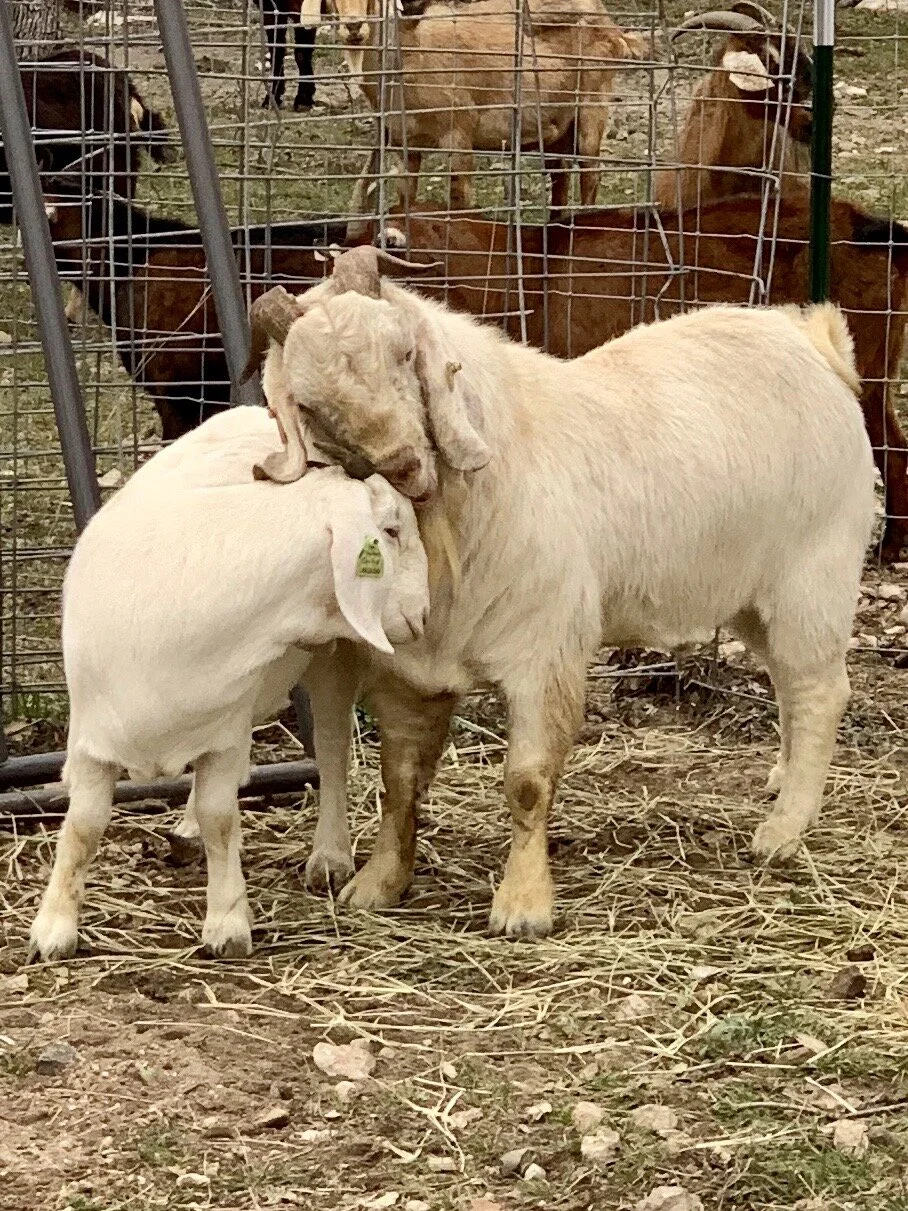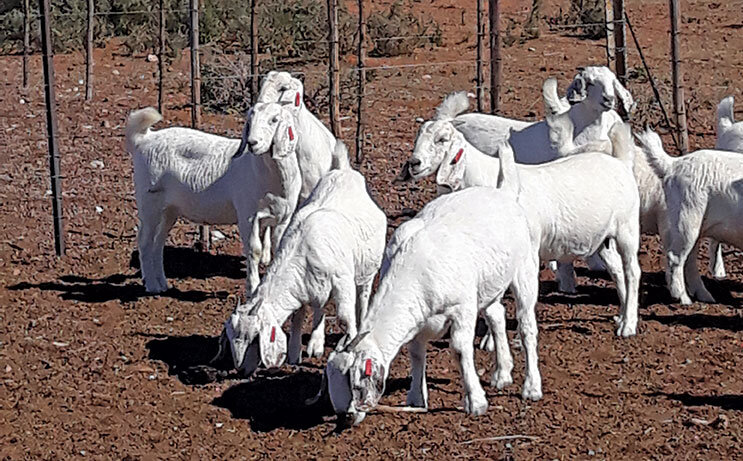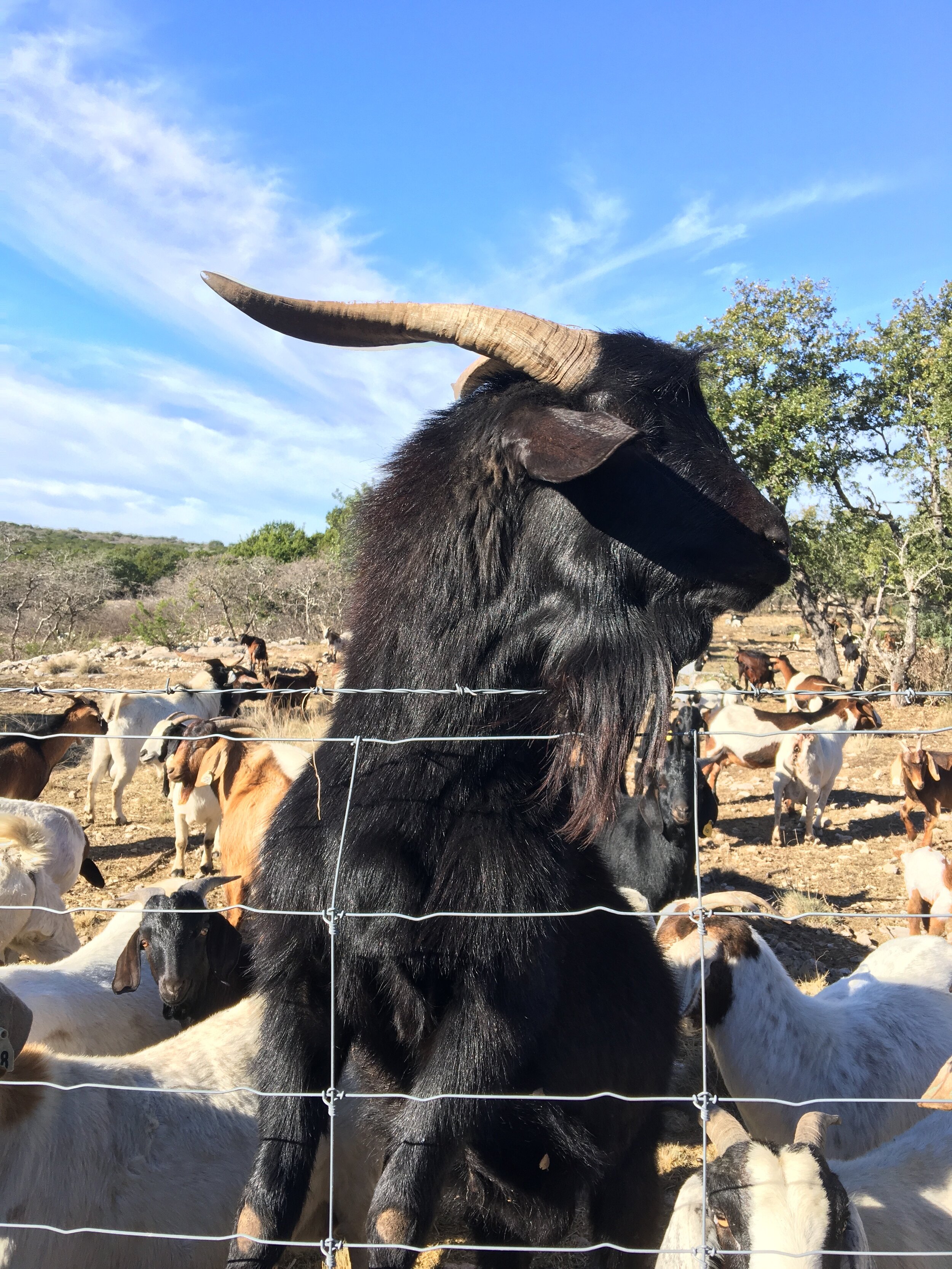Meat Goats
Spanish Goats
Beginning in the 1500s, Spanish goats were brought from Spain to the Caribbean Islands and from there to the areas that would become the United States and Mexico. These foundation stocks were an undifferentiated Mediterranean type of goat that was common in Spain at the time but no longer exists. This adds genetic and historic importance to the Spanish goat breeds that evolved in the New World.
The breed has secured a production niche in Texas, and the largest number of Spanish goat herds are found in this state. They are especially tolerant of difficult conditions and forage well on local plants. Spanish does are prolific and produce enough milk for moderate growth rates of the kids. They are believed to be relatively tolerant of internal parasites. Spanish goats are very active and can be considered flighty. Even in Texas, however, it has become common for Spanish goats to be crossbred for meat production, especially with the Savanna/Boer goats, meat breed from South Africa
Savanna Goats
The white Savanna goat breed was developed from indigenous goats of South Africa. Various farmers bred what was known as white Boer goats for a number of years in South Africa. One of the advantages of these white goats was the fact that the white color is dominant over most other colors. The other reason is that there is a big demand for white goats for slaughter purposes for various reasons. In 1957, Cilliers and Sons along the Vaal River became the best-known of the originators of this meat goat breed. On the rugged, harsh bush country where temperatures and rainfall can vary to a marked extent, natural selection played a big role in the development of these fertile, easy to care for, heat and drought resistant animals. These goats have thick, pliable skins with short white hair. The Savanna has excellent reproduction, muscular development, good bones and strong legs and hooves.
The Savanna is not a seasonal breeder, and mating can usually be done at a time that will ensure enough feed is available at kidding. The Savanna goat is a highly fertile and fecund breed, and a high twinning rate is generally achieved, even under less than optimal conditions.
Savanna wethers have a good growth rate and are an early- to medium-maturity type that produces carcasses with good confirmation.
The does have very good mothering ability and great milk production and produce fast-growing kids. Best of all, they require very little handling and care due to their disease resistance and limited hoof problems
Spanish - Savanna Crosses
Savanna-Spanish cross delivers the best of both worlds. Unlike Boer meat goats, fullblood Savannas fare better on Texas ranch pastures. Savannas are hardy and adaptable, have great mothering traits and a good nature, and are resistant to tick-born diseases and parasites.
Because of the high cost of verified fullblood’s, we market and purebreds. Purebreds come from breeding verified Savanna fullbloods to our Spanish and Spanish crosses. Much of our 300 head is made up of fullblood Savanna bucks bred to SpanishXSavanna does. Our preference is the 3/4 and 7/8 does because they're an affordable commercial goat with all the right stuff.
The cross makes a plucky, large carcass meat goat with good mothering traits Savanna goats can be found in hot and cold climates; all goats have issues in wetter regions. They thrive on browse and require minimum care and handling.
Pound for pound this goat cross resulted in a lower input animal, that gains weight rapidly.




